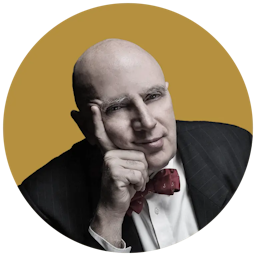Chasing ‘Trane Whistle in Midtown
This article is from the archive of The New York Sun before the launch of its new website in 2022. The Sun has neither altered nor updated such articles but will seek to correct any errors, mis-categorizations or other problems introduced during transfer.

The annual International Association for Jazz Education conference is the closest thing the jazz world has to a trade show.The event, which is taking place at the Hilton on Sixth Avenue and the Sheraton on Seventh Avenue,is themed to education rather than to commerce, but the difference is strictly academic. Not only do music teachers and their students attend dozens of panels, symposiums, and teaching sessions; so do music publishers, record companies, instrument manufacturers, college representatives, talent agents, and audio-equipment firms – some 7,000 people in all.
The conference also offers a great opportunity for local jazz lovers take in some big-name performers. The music kicked off Wednesday evening with four auspicious acts: the Ravi Coltrane Quartet, the No Name Horses Jazz Orchestra, the Monty Alexander Trio and the Maria Schneider Jazz Orchestra.
In the 10 years I’ve been listening to Ravi Coltrane, his playing has matured and evolved considerably.When I first heard him, his tenor-saxophone timbre instantly recalled the middleground approach of Hank Mobley (whose compositions he seemed to play frequently). Now, shortly after his 40th birthday and the release of his fourth album as a leader,”In Flux” (Savoy Jazz 17444), Mr. Coltrane is developing a dramatic, commanding approach in which he simultaneously sounds more like his legendary father and, somehow, more like himself.
His first piece, trumpeter Ralph Alessi’s “One Wheeler Will,” was a thick, ultra-bop number that started densely and gradually lightened, giving the effect of a tangled piece of string straightening itself out. He followed this with “For Zoe,”which begins with a prayer-like opening similar to one of his father’s spiritual pieces. But where John Coltrane’s “Crescent” starts slowly with an invocation and moves into a jazzier melody, Ravi’s “Zoe” remains in introduction mode throughout, never quite snapping into tempo. He piles on the suspense, and, instead of relieving it, just builds up more and more tension.
Mr. Coltrane also played a slow ballad and a bouncy samba from the new album, both of which were buoyed by the dynamic drumming of E.J. Strick land.The latter improvised a fortuitous percussion solo while bassist Drew Gress changed a broken string and pianist Luis Perdomo and Mr. Coltrane prayed for him to finish on time.
After Mr. Coltrane’s set at the Hilton, most of the crowd dashed over to the Sheraton, where Mr. Alexander was about to start. But I stuck around for No Name Horses, a hard-swinging, old-school big band led by the wellknown Japanese pianist Makoto Ozone.Those who bolted missed something special.
This expert orchestra of 15 gifted, mostly youngish Japanese men and women began with an original song that telegraphed its allegiance to Neal Hefti and the New Testament Basie Band with a decidedly Countish coda. Mr. Ozone followed this with a shimmering, Latinate arrangement of the Victor Young standard “Street of Dreams,” in which the band’s baritone saxophonist laid down a contrapuntal melody while four flugelhorns played another counterpoint line in harmony behind him.
The band’s next piece pivoted around a bass solo and gradually built to a big drum-driven crescendo, stressing tonal colors over melody in a way that reminded me of Maria Schneider. After a hard-swinging trombone battle obviously inspired by J.J. Johnson and Kai Winding, they essayed another lovely mood piece, “You Are Not Alone,” this one more classical in texture. This ballad began with a mix of clarinets and flutes, and at different points it suggested both Dave Brubeck’s large-ensemble pieces and Gil Evans’s writing for Claude Thornhill.
I missed the last tune of NNH’s set to catch what I could of Mr.Alexander. When I arrived, this fine Jamaican pianist was reminiscing about how, when he originally arrived in the States, his first gig was at Frank Sinatra’s hangout Jilly’s, which once stood just down the block from the Sheraton. Mr. Alexander’s Sinatra kick also included the swinger “Come Fly With Me” and the saloon song “In the Wee Small Hours.”
Mr. Alexander and his trio (Hassan Shakur, bass and Herlin Riley, drums) then switched to island mode, essaying the Sonny Rollins-associated calypso “Don’t Stop the Carnival.” He finished with jazz treatments of two Bob Marley songs, “No Woman, No Cry” and “Concrete Jungle.” On the latter, Mr.Alexander introduced several new tonal colors: a fourth musician, a guitarist and singer he identified as “Junior Jazz,” and the pianist himself doubled on melodica, a small, keyboard-driven wind instrument that made this composition seem different from the other Caribbean works.
Having very recently seen Ms. Schneider, who wasn’t due to go on until 12:30 a.m., I left after Mr. Alexander finished. But I’ll certainly be spending more of the wee small hours this weekend at the Sheraton and the Hilton.
The IAJE Annual Conference, which runs until January 14, holds evening performances at the Hilton and Sheraton hotels in Midtown (1335 Sixth Avenue, 212-586-7000; 811 Seventh Avenue, 212-581-1000).

